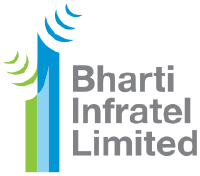Company Analysis Sun TV Network Limited
1. Summary
Advantages
- Dividends (2.76%) are higher than the sector average (1.22%).
- The company's current efficiency (ROE=19.44%) is higher than the sector average (ROE=15.98%)
Disadvantages
- Price (619.3 ₹) is higher than fair price (602.58 ₹)
- The stock's return over the last year (-23.83%) is lower than the sector average (0%).
- Current debt level 0.3305% has increased over 5 years from 0.000323%.
Similar companies
2. Share price and performance
2.1. Share price
2.3. Market efficiency
| Sun TV Network Limited | Communication Services | Index | |
|---|---|---|---|
| 7 days | -1.1% | 0.8% | 0.2% |
| 90 days | -4.4% | 17.3% | 3.9% |
| 1 year | -23.8% | 0% | 2.9% |
SUNTV vs Sector: Sun TV Network Limited has significantly underperformed the "Communication Services" sector by -23.83% over the past year.
SUNTV vs Market: Sun TV Network Limited has significantly underperformed the market by -26.69% over the past year.
Stable price: SUNTV is not significantly more volatile than the rest of the market on "National Stock Exchange Of India" over the last 3 months, with typical variations of +/- 5% per week.
Long period: SUNTV with weekly volatility of -0.4583% over the past year.
3. Summary of the report
4. Fundamental Analysis
4.1. Stock price and price forecast
Above fair price: The current price (619.3 ₹) is higher than the fair price (602.58 ₹).
Price is higher than fair: The current price (619.3 ₹) is 2.7% higher than the fair price.
4.2. P/E
P/E vs Sector: The company's P/E (12) is lower than that of the sector as a whole (35.23).
P/E vs Market: The company's P/E (12) is lower than that of the market as a whole (66.04).
4.2.1 P/E Similar companies
4.3. P/BV
P/BV vs Sector: The company's P/BV (2.19) is lower than that of the sector as a whole (4.41).
P/BV vs Market: The company's P/BV (2.19) is lower than that of the market as a whole (6.6).
4.3.1 P/BV Similar companies
4.4. P/S
P/S vs Sector: The company's P/S indicator (5.4) is higher than that of the sector as a whole (5.33).
P/S vs Market: The company's P/S indicator (5.4) is lower than that of the market as a whole (18.95).
4.4.1 P/S Similar companies
4.5. EV/Ebitda
EV/Ebitda vs Sector: The company's EV/Ebitda (7.27) is lower than that of the sector as a whole (13.64).
EV/Ebitda vs Market: The company's EV/Ebitda (7.27) is lower than that of the market as a whole (24.96).
5. Profitability
5.1. Profitability and revenue
5.2. Earnings per share - EPS
5.3. Past profitability Net Income
Yield Trend: Rising and has grown by 7.8% over the last 5 years.
Earnings Slowdown: The last year's return (0%) is below the 5-year average return (7.8%).
Profitability vs Sector: The return for the last year (0%) is lower than the return for the sector (0%).
5.4. ROE
ROE vs Sector: The company's ROE (19.44%) is higher than that of the sector as a whole (15.98%).
ROE vs Market: The company's ROE (19.44%) is higher than that of the market as a whole (3.54%).
5.5. ROA
ROA vs Sector: The company's ROA (17.85%) is higher than that of the sector as a whole (2.35%).
ROA vs Market: The company's ROA (17.85%) is higher than that of the market as a whole (7.89%).
5.6. ROIC
ROIC vs Sector: The company's ROIC (25.35%) is higher than that of the sector as a whole (24.07%).
ROIC vs Market: The company's ROIC (25.35%) is higher than that of the market as a whole (15.45%).
7. Dividends
7.1. Dividend yield vs Market
High yield: The dividend yield of the company 2.76% is higher than the average for the sector '1.22%.
7.2. Stability and increase in payments
Dividend stability: The company's dividend yield 2.76% has been steadily paid over the past 7 years, DSI=0.93.
Dividend growth: Company's dividend yield 2.76% has been growing over the last 5 years. Growth over 5 years.
7.3. Payout percentage
Dividend Coverage: Current payments from income (34.29%) are at a comfortable level.
Pay for your subscription
More functionality and data for company and portfolio analysis is available by subscription

 MAX Chat
MAX Chat

